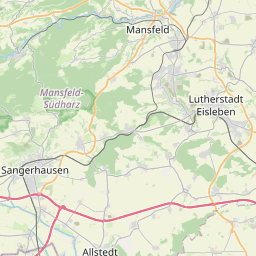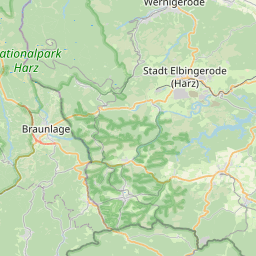












Description: Das Brasilianische Tausendblatt stammt aus Südamerika und wird als Zierpflanze in Aquarien und in Zierteichen genutzt. Es verträgt kurze schwache Fröste, erfriert aber bei längeren oder stärkeren Frösten. In Sachsen-Anhalt wurde es 2001 zum ersten und einzigen Mal im Fürstenteich in Silberhütte bei Harzgerode gefunden, wo es vermutlich von Aquarianern angesalbt wurde. Nach dem Winter 2001/2002 wurde es nicht wieder beobachtet. Im milderen Bereichen Westeuropas bildet es in flachen Teichen, Gräben und anderen Kleingewässern dichte, undurchdringliche Matten. Diese verringern den Sauerstoffgehalt des Gewässers und verdrängen heimische Pflanzenarten. Unionsliste der EU-Verordnung Nr. 1143/2014 Maßnahmenblatt Schwarze Liste Sachsen-Anhalt Steckbrief Verbreitungskarte Atlas Lebensraum: meso-bis eutrophe stehende und fließende Gewässer und angrenzende Feuchtgebiete Bestimmungshilfe: Q-Bank (engl.) , IUCN-identification guide (engl.) Steckbriefe / Factsheets: Artensteckbrief Regierungspräsidium Gießen , Naturschutzfachliche Invasivitätsbewertung , Wikipedia , CABI Invasive Species Compendium (engl.) , Q-Bank (engl.)
Taxon {
kingdom: None,
phylum: None,
class: None,
order: None,
family: None,
genus: None,
scientific_name: "Myriophyllum aquaticum",
common_names: [
"Tausendblatt, Brasilianisches",
],
taxonomic_status: None,
conservation_status: None,
}
Comment: Synonym(e): Enydria aquatica, Myriophyllum brasiliense, Myriophyllum proserpinacoides, Papageienfeder, parrot-feather
Origins: /Zivilgesellschaft/UfU/KORINA
Tags: Gießen ? Sachsen-Anhalt ? Zierpflanze ? Verbreitungskarte ? Fließgewässer ? Graben ? Invasive Arten ? Einheimische Pflanzenart ? Feuchtgebiet ? Frost ? Südamerika ? Westeuropa ? Sauerstoffgehalt ? Kleingewässer ?
Bounding boxes: 11.096245568056° .. 11.096245568056° x 51.6257322249882° .. 51.6257322249882°
License: other-open
Language: Deutsch
Verbreitungskarte
http://korina.info/funde/atlas/?schnellart=80367 (Webseite)Steckbriefe / Factsheets: Artensteckbrief Regierungspräsidium Gießen , Naturschutzfachliche Invasivitätsbewertung , Wikipedia , CABI Invasive Species Compendium (engl.) , Q-Bank (engl.)
http://natureg.hessen.de/resources/recherche/Schutzgebiete/GI/Sonstige/ASB_INVA5_Brasilianisches_Tausendblatt.pdf (PDF)NEHRING, S. (2016): Die invasiven gebietsfremden Arten der ersten Unionsliste der EU-Verordnung Nr. 1143/2014. BfN-Skripten 438. 136 S. A B M V W >>
http://www.bfn.de/fileadmin/BfN/service/Dokumente/skripten/Skript_438.pdf (PDF)CABI: Myriophyllum aquaticum (parrot-feather). Datasheet Invasive Species Compendium. Stand: 14.10.2015 A M V W >>
http://www.cabi.org/isc/datasheet/34939 (Webseite)NNSS (2010): Parrot´s Feather. GB non-native species secretariat. 2 S. B >>
http://www.nonnativespecies.org/downloadDocument.cfm?id=66 (Webseite)Q-BANK INVASIVE PLANTS: Myriophyllum aquaticum. Stand: 19.1.2016 A B V W >>
http://www.q-bank.eu/Plants/BioloMICS.aspx?Table=Plants%20-%20Species&Rec=36&Fields=All (Webseite)Bestimmungshilfe: Q-Bank (engl.) , IUCN-identification guide (engl.)
http://www.q-bank.eu/Plants/lookalikes/Myriophyllum/Myriophyllum.HTML (Webseite)Bestimmungshilfe: Q-Bank (engl.) , IUCN-identification guide (engl.)
https://circabc.europa.eu/sd/a/2535b9ce-80a9-4c30-9de2-1077eae21aaf/2018-identification-guide.pdf (PDF)NEU! HUSSNER, A. et al. (2021): From introduction to nuisance growth: a review of traits of alien aquatic plants which contribute to their invasiveness. Hydrobiologia A M W >>
https://link.springer.com/article/10.1007/s10750-020-04463-z (Webseite)Verbreitungskarte (GeoJSON)
https://www.korina.info/atlas/geojson/generategeojson.php?taxnr=80367 (GeoJSON)Schwarze Liste Sachsen-Anhalt Steckbrief
https://www.korina.info/wp-content/uploads/2017/07/SA_BfNEinstufungssteckbrief_Myriophyllum-aquaticum.pdf (PDF)Vorkommen des Brasilianischen Tausendblattes in Belgien, Foto: Jo Packet
https://www.korina.info/wp-content/uploads/2017/08/Myriophyllum-aquaticum-Jo-Packet-Belgien-juni_2010-084ddx-20180917094511-2000-738.jpg (Bild)Foto: Alison Fox, University of Florida, Bugwood.org
https://www.korina.info/wp-content/uploads/2017/10/Myriophyllum-aquaticum-Alison-Fox-University-of-Florida-Bugwood.org-2308001-LGPT_C-20180917094507-1200-1024.jpg (Bild)Foto: Graves Lovell, Alabama Department of Conservation and Natural Resources, Bugwood.org
https://www.korina.info/wp-content/uploads/2017/10/Myriophyllum-aquaticum-Graves-Lovell-Alabama-Department-of-Conservation-and-Natural-Resources-Bugwood.org-5400576-SMPT_C-20180917094506-1200-1024.jpg (Bild)Foto: Jo Packet
https://www.korina.info/wp-content/uploads/2017/10/Myriophyllum-aquaticum-Jo-Packet-Belgien-IMG_4486-cx-20180917094459-1200-1024.jpg (Bild)Foto: Leslie Mehrhoff, University of Connecticut, Bugwood.org
https://www.korina.info/wp-content/uploads/2017/10/Myriophyllum-aquaticum-Leslie-J.-Mehrhoff-University-of-Connecticut-Bugwood.org-5456201-SMPT_C-20180917094504-1200-1024.jpg (Bild)Foto: Tim Adriaens
https://www.korina.info/wp-content/uploads/2017/10/Myriophyllum-aquaticum-Tim-Adriaens-MYRIAQUA2_TimA-cx-20180917094506-1200-1024.jpg (Bild)Foto: Andre Karwath CC commons.wikimedia.org
https://www.korina.info/wp-content/uploads/2017/10/Myriophyllum_aquaticum-Andre-Karwath-CC-commons.wikimedia.org-cx-20180917094502-1200-1024.jpg (Bild)Unionsliste der EU-Verordnung Nr. 1143/2014 Maßnahmenblatt
https://www.korina.info/wp-content/uploads/2018/08/LANA-2018-Brasilianisches_Tausendblatt_Myriophyllum_aquaticum.pdf (PDF)UMWELTBUNDESAMT (2019): Myriophyllum aquaticum – Brasilianisches Tausendblatt. neobiota-austria.at. (abgerufen am 21.04.2020). A W >>
https://www.neobiota-austria.at/myriophyllum-aquaticum (Webseite)HUSSNER, A. (2016): Zur Biologie invasiver aquatischer Neophyten: Myriophyllum aquaticum. Floristische Rundbriefe 50, S. 84-97. A M >>
https://www.researchgate.net/publication/313653456_ZUR_BIOLOGIE_INVASIVER_AQUATISCHER_NEOPHYTEN_MYRIOPHYLLUM_AQUATICUM (Webseite)Accessed 1 times.